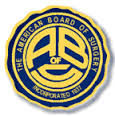Everyone has a little web of flesh between their thumb and their forefinger. If there are fleshy webs between your fingers as well, though, you may have a condition known as syndactyly.
What Is Syndactyly?
Simply stated, syndactyly is a condition in which adjacent fingers have grown together and appear webbed. If the fingers are completely joined, the condition is known as “complete syndactyly.” If only part of the fingers are involved, this is “incomplete syndactyly.” If both the flesh and the skin are involved, the condition is referred to as “simple syndactyly,” although sufferers would probably argue that there is nothing simple about it. Complete syndactyly is a joining of the bones. Fingers may also be joined at the tips, but have separate bones. This is complete simple syndactyly.
Causes
Syndactyly is a birth defect. The condition is sometimes genetic, passed down from one generation to the next. Other times, it occurs for no apparent reason. What is known, though, is that syndactyly has nothing to do with anything the mother may have done or neglected to do throughout her pregnancy. There is no need for a mother to feel guilty if her child is born with syndactyly.
Treatment
If it appears that syndactyly may interfere with function, it can be surgically corrected. Otherwise, parents can make the decision based on aesthetics. Most cases of syndactyly actually will not impair function. If surgery is done, though, therapy will be required post-surgery. Usually this involves wearing spacers between the fingers while the child is sleeping, in order to prevent the fingers from growing together again. The hand will also need to be bandaged for some time – perhaps even months. There may also be a need for follow-up surgery in years to come.
Success of Treatment
The goal of the surgery for syndactyly is to improve appearance, and also prevent the deformity from progressing. Usually, this is successful, although the appearance of the hand may not be completely what we would consider to be “normal.” It is important to remember that unless the appearance of the hand is extremely abnormal, what most people notice about the hand is not how it looks, but how it works. As long as a person is using their hand in a natural manner, deformities will usually be overlooked by the casual observer.
Refusing Treatment
If you have a child who has syndactyly, treatment is generally optional. Syndactyly does not usually present a health risk unless the fingers are joined toward the tips – in that case, they will bend in undesirable directions over the course of time. In such situations, surgery should be performed in the early years so the child can adapt to the changes in his or her hand. If delayed beyond the early childhood years, the results of syndactyly surgery are usually less than satisfactory.
If the condition is likely to result only in aesthetic issues, then surgery can be foregone without fear of complications down the road.












